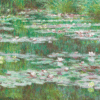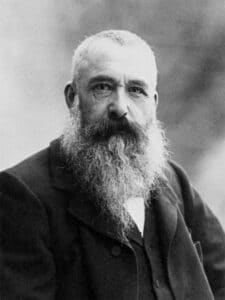
The Life Behind the Art: 5 Fascinating Facts About Claude Monet

Source: Wikimedia Commons
Claude Monet, the founder of French Impressionism, changed the landscape of art forever with his revolutionary techniques and dedication to capturing light and color. His personal life and artistic journey are filled with fascinating details that shaped both his work and his legacy. Here are five interesting facts about Claude Monet that you may not know.
1. When Was Claude Monet Born?
Claude Monet was born on November 14, 1840, in Paris, France, but he spent most of his early years in Le Havre, a coastal town in Normandy. The natural beauty of the area greatly influenced Monet’s love for outdoor painting and laid the foundation for his passion for capturing nature in his art.
2. Monet’s Famous Garden at Giverny
One of the most interesting facts about Claude Monet is his deep connection to his garden in Giverny, where he lived from 1883 until his death. Monet meticulously designed this garden, which became his greatest muse. His famous Water Lilies series, among his most iconic works, was painted in this garden. Monet’s house and gardens in Giverny still stand today and can be visited, providing insight into his daily life and inspiration.
3. How Many Water Lilies Did Monet Paint?
Monet’s fascination with water lilies was more than just an artistic phase—it became an obsession. Over a span of 30 years, Monet painted around 250 works depicting his water garden at Giverny. These masterpieces are spread across museums around the world, from the Musée de l’Orangerie in Paris to the Metropolitan Museum of Art in New York.
4. What Is Claude Monet Known For?
Monet is best known as the father of Impressionism, a movement that sought to capture moments in time using loose brushwork and vivid colors. One of the most important Claude Monet art facts is that his painting “Impression, Sunrise” (1872) gave the movement its name. This piece, depicting a hazy morning at the port of Le Havre, is celebrated for its bold use of color and light rather than precise detail, marking a radical departure from traditional painting techniques.
5. How Did Claude Monet Die?
Monet passed away on December 5, 1926, at the age of 86, in Giverny, France. He struggled with cataracts in his later years, which affected his vision and the colors in his paintings. Despite this, he continued to work on his beloved water lilies. Monet was laid to rest in the Giverny cemetery, not far from the gardens that inspired his greatest works.
Claude Monet’s life was as vibrant and colorful as the masterpieces he created. From his early years in Normandy to his final days in Giverny, Monet’s love for nature and dedication to art left a lasting impact on the world. His works, especially his Water Lilies, continue to inspire generations, and visiting Giverny allows you to step into the world that shaped his genius.
Don’t miss your chance to experience Claude Monet’s masterpieces in an immersive way at the Beyond Monet exhibit! This incredible journey brings Monet’s vibrant colors and brushstrokes to life, allowing you to walk through the iconic water lilies and step into the mind of one of the greatest artists of all time.
Brush Up On Monet
Sign up for our newsletter and be the first to know about announcements in your area. As a subscriber, you will get exclusive presale access and discount offers.











































